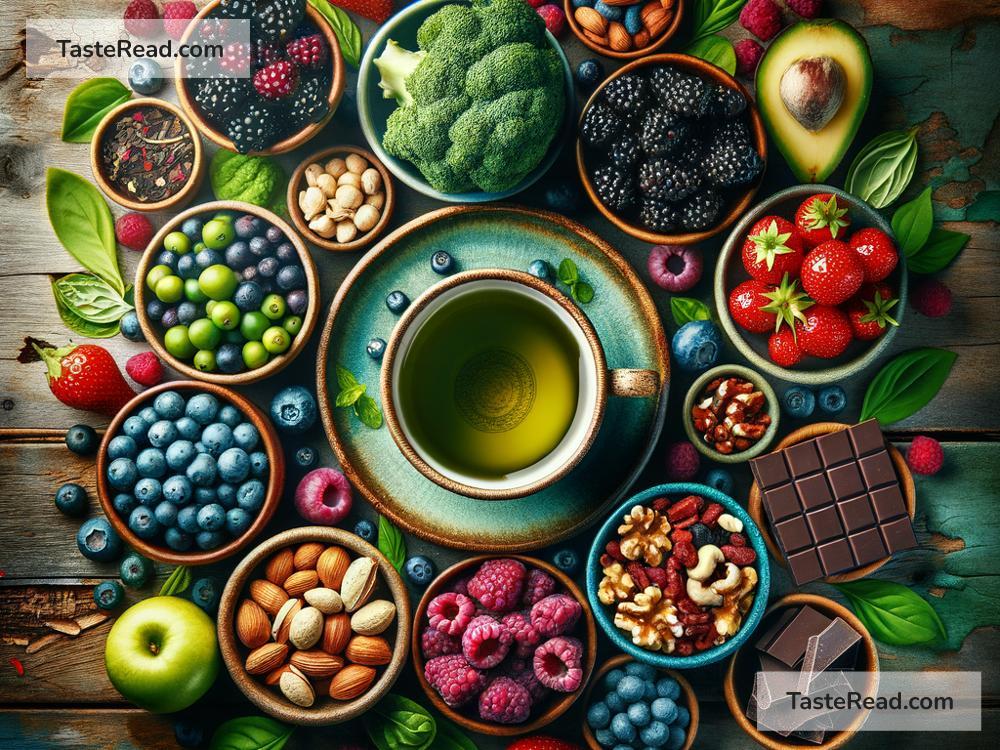How to Incorporate More Antioxidants into Your Diet
Have you ever heard the word “antioxidants” and wondered what all the fuss is about? Antioxidants are powerful compounds that help fight against free radicals, which can damage the cells in your body. Free radicals are unstable molecules that can lead to aging, inflammation, and even diseases like cancer. Think of antioxidants as tiny protectors, keeping your body healthy and strong.
Good news: incorporating more antioxidants into your diet isn’t difficult, and doing so can improve your overall well-being. In this blog, we’ll explore simple and practical ways to add more antioxidant-rich foods to your meals.
What Are Antioxidants?
Antioxidants are naturally found in many foods, especially fruits, vegetables, nuts, and tea. They come in different forms, such as vitamins (like C and E), minerals (like selenium), and plant compounds (like flavonoids and polyphenols). Each type plays a unique role in keeping you healthy.
Why Are Antioxidants Important?
Free radicals are produced in your body during normal processes like exercise or metabolism, but excessive amounts can harm you. Things like pollution, smoking, poor diet, or stress can increase free radicals. Over time, this damage can contribute to aging, heart disease, and other health problems.
Antioxidants neutralize these harmful molecules, minimizing damage and keeping your cells in top shape. That’s why eating antioxidant-rich foods is key to supporting a healthy lifestyle.
1. Fill Half Your Plate With Colorful Fruits and Vegetables
The first (and easiest) way to increase antioxidants is to eat more fruits and vegetables. Brightly colored produce tends to be packed with antioxidants. For example, berries are full of vitamin C and other compounds that help reduce inflammation.
Here are some top choices:
– Berries – Strawberries, blueberries, raspberries, and blackberries are antioxidant powerhouses.
– Leafy greens – Spinach, kale, and Swiss chard contain nutrients like beta-carotene, which is a antioxidant linked to eye health.
– Sweet potatoes – These are rich in carotenoids, which can help improve immune function.
– Tomatoes – Packed with lycopene, known for its heart-protective properties.
Make a habit of filling half your plate with fruits and veggies during meals. Add colorful salads, roasted vegetables, or smoothies to your diet!
2. Go Nuts for Nuts and Seeds
Nuts and seeds are an excellent source of antioxidants, healthy fats, and fiber. Almonds, walnuts, sunflower seeds, and chia seeds contain vitamin E and other anti-inflammatory nutrients that help your cells stay healthy.
Snack on a handful of nuts or sprinkle seeds on your yogurt, oatmeal, or salads. Just remember to choose unsalted versions and eat them in moderation.
3. Sip on Green Tea or Herbal Teas
Green tea is well-known for its antioxidant benefits, thanks to a compound called catechins. Drinking a cup of green tea daily can boost your immune system and even improve brain health. Herbal teas, such as chamomile or hibiscus tea, also contain antioxidants and make soothing alternatives to sugary drinks.
Replace soda or juice with a cup of tea to enjoy better health and fewer empty calories.
4. Cook with Herbs and Spices
Your spice rack can do more than add flavor—it can boost your antioxidant intake, too! Popular herbs and spices like turmeric, cinnamon, oregano, and ginger contain powerful compounds that fight inflammation.
For example:
– Turmeric contains curcumin, which is a strong anti-inflammatory antioxidant.
– Cinnamon helps balance blood sugar and contains polyphenols.
– Oregano is rich in antioxidants that support heart health.
Season your dishes with these natural flavor boosters to pack an antioxidant punch.
5. Choose Dark Chocolate Over Sugary Treats
Here’s a sweet surprise: dark chocolate is a great source of antioxidants! It contains flavonoids, which support heart health and may improve circulation. Choose dark chocolate with a high cocoa content (70% or more) and enjoy it in moderation.
Swap milk chocolate or sugary desserts for a square or two of dark chocolate. It’s a guilt-free treat that’s actually good for you!
6. Replace White Grains with Whole Grains
Whole grains like quinoa, brown rice, and oats are loaded with antioxidants, fiber, and vitamins. Unlike refined grains (like white bread or white rice), whole grains are less processed and contain more nutrients.
Make simple swaps by choosing whole grain bread, pasta, or cereals at the grocery store. Adding more whole grains to your meals will benefit both your heart and digestion.
7. Include Beans and Legumes in Your Meals
Beans and legumes like lentils, black beans, chickpeas, and kidney beans are packed with antioxidants, protein, and fiber. They’re not only nutritious but also affordable and versatile.
Try adding beans to soups or salads, use them as a meat substitute in dishes like tacos or chili, or make delicious spreads like hummus.
8. Eat Seasonal and Fresh Foods
Fresh, seasonal produce often has higher levels of antioxidants compared to out-of-season or highly processed foods. Visit your local farmer’s market to find fresh berries, apples, oranges, or leafy greens that are loaded with nutrients.
By choosing fresh, whole foods, you skip preservatives and artificial chemicals that don’t benefit your health.
Conclusion
Getting more antioxidants into your diet doesn’t have to be complicated. By eating colorful fruits and veggies, snacking on nuts, sipping antioxidant-rich teas, and seasoning your meals with herbs and spices, you can give your body the protection it needs to thrive.
Start small—add berries to your morning oatmeal, switch to whole grain bread, or sip green tea in the afternoon. Little changes can go a long way in improving your health. So, stock your kitchen with antioxidant-packed foods and enjoy the benefits of a more vibrant, energized life!


